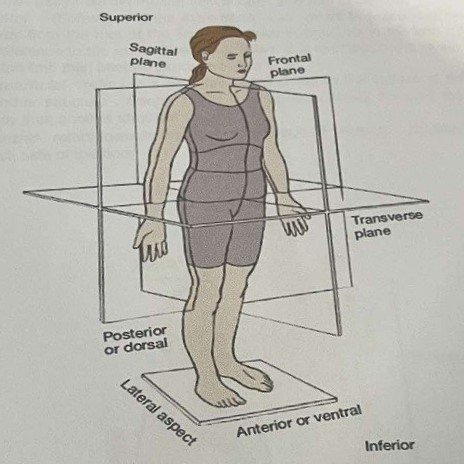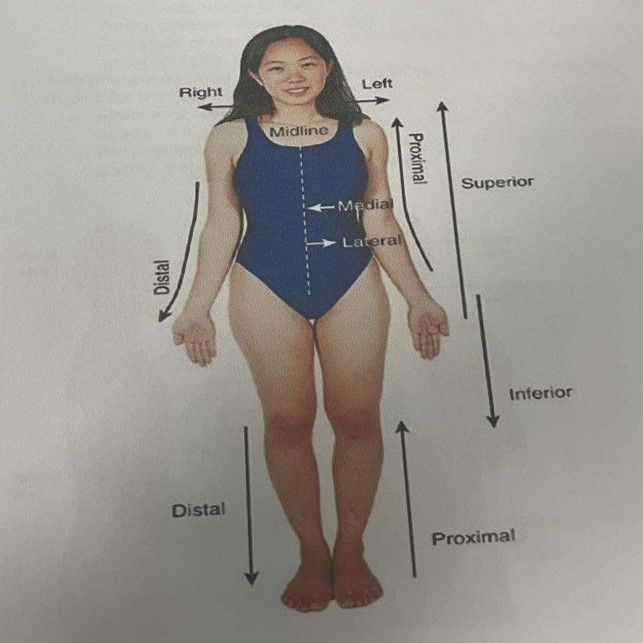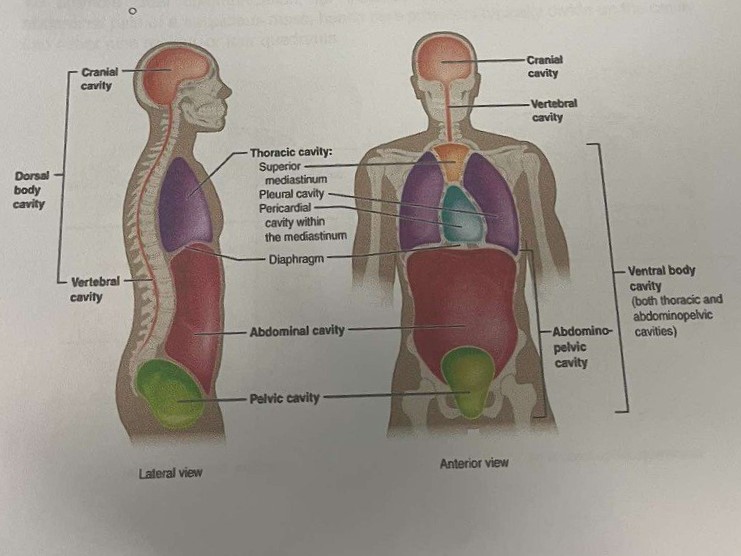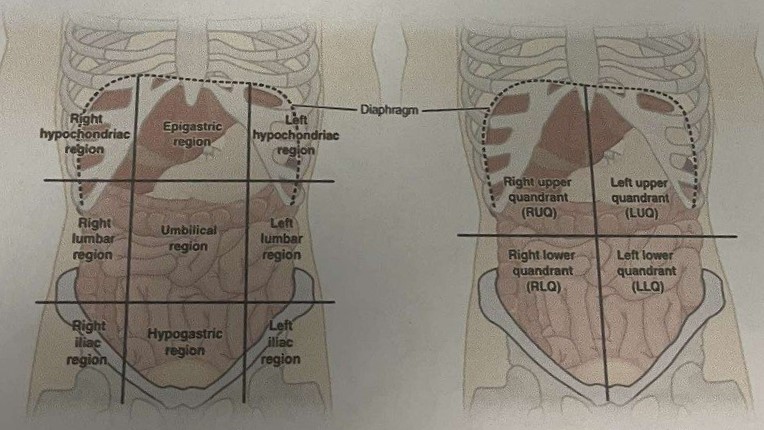ANAPHY - MODULE 5: ANATOMICAL LANGUAGES AND BODY PLAN
1/58
Earn XP
Description and Tags
Name | Mastery | Learn | Test | Matching | Spaced |
|---|
No study sessions yet.
59 Terms
Anatomical Plane
hypothetical plane used to transect the body to describe the location of structures or the direction of movements
Anatomical Plane
fixed lines of reference along which the body is often divided or sectioned to facilitate viewing of its structures
Anatomical Plane
allows to obtain a three-dimensional perspective by studying the body from different views
Three Principal Planes
Sagittal Plane
Frontal Plane
Horizontal Plane
Sagittal Plane
plane that run lengthwise dividing the body into right and left portions
Midsagittal or Median
plane dividing the body into equal right and left halves, dividing the body right down the midline of the body
Frontal Plane
plane dividing the body into front (anterior) and back (posterior) portions
Coronal Plane
another term for frontal plane
Horizontal Plane
dividing body into upper (superior) and lower (inferior) portions
Transverse Plane
another term for horizontal plane
Standard Anatomical Position
way of describing the anatomy of an organism so that it is easy to understand what part of the body is being talked about no matter what direction the organism is facing or where its appendages/limbs are
Standard Anatomical Position
In humans, the body is standing erect, with palms and feet facing forward with the body at rest
Body Positions and Directions
Superior - Inferior
Anterior - Posterior
Medial - Lateral
Distal - Proximal
Superficial - Deep
Ventral - Dorsal
Superior
structure being closer to the head or higher than another structure in the body
Inferior
structure being closer to the feet or lower than another structure in the body
Anterior
structure being more in front than another structure in the body
Posterior
structure being more in back than another structure in the body
Medial
structure being closer to the midline or median plane of the body than another structure of the body
Lateral
structure being farther away from the midline than another structure of the body
Distal
structure being further away from the root of the limb than another structure in the limb (reference to the extremities only)
Proximal
structure being closer to the root of the limb than another structure in that limb (reference to the extremities only)
Superficial
structure being closer to the surface of the body than another structure
Deep
structure being closer to the core of the body than another structure
Ventral
refers towards the front or belly side of the body
Dorsal
refers to the back side of the body
Body Cavity
any hollow space or compartment in the body
Cavities
accommodate organs and other structures; cavities potential spaces contain fluid
Two Largest Human Body Cavity
Ventral Body Cavity
Dorsal Body Cavity
Dorsal Cavity
located toward the back of the body, divided into the cranial cavity (holds the brain) and vertebral or spinal cavity (holds the spinal cord)
Ventral Cavity
located toward the front of the body, divided into abdominopelvic cavity and thoracic cavity by the diaphragm
Thoracic Cavity
the chest; contains trachea, bronchi, lungs, esophagus, heart and great blood vessels, thymus gland, lymph nodes, and nerves
Smaller Cavities found in Thoracic Cavity
Pleural Cavities
Pericardial Cavity
Pleural Cavities
surround each lung
Pericardial Cavity
contains the heart; pleural cavities flank the pericardial pericardial cavity
Abdominopelvic Cavity
an imaginary line running across the hipbones and dividing the body into the abdominal and pelvic cavities
Abdominal Cavity
contains the stomach, liver, gallbladder, pancreas, spleen, small intestines, and most of the large intestine
Pelvic Cavity
contains the end of the large intestine, rectum, urinary bladder, and internal rep
Body Movements (8)
Flexion
Extension
Adduction
Abduction
Pronation
Retraction
Protraction
Elevation
Flexion
bending a joint or decreasing the angle between two bones; in the fetal position, we are flexing our joints
Extension
straightening a joint or increasing the angle between two bones; in the Anatomical Position we are extending our joint
Adduction
moving a body part towards the midline of the body
Abduction
moving a body part away from the midline of the body
Pronation
turning the arm or foot downward; (palm or sole of the foot - down)
Retraction
moving a part backward
Protraction
moving a part forward
Elevation
raising a part
Regional Terms
Axial Part
Appendicular Part
Axial Part
includes the head, neck and trunk
Appendicular Part
includes the limbs (arms and legs) which are attached to the body’s axis
Abdominal Regions and Quadrants
to promote clear communication, for instance about the location of a patient’s abdominal pain or a suspicious mass, health care providers typically divide up the cavity into either nine regions or four quadrants
Upper Part of Abdominopelvic Regions
right hypochondriac region
epigastric region
left hypochondriac region
Middle Part of Abdominopelvic Regions
right lumbar region
umbilical region
left lumbar region
Lower Part of Abdominopelvic Regions
right iliac region
hypogastric region
left iliac region
Upper Part of Abdominopelvic Quadrants
right upper quadrant (RUQ)
left upper quadrant (LUQ)
Lower Part of Abdominopelvic Quadrants
right lower quadrant (RLQ)
left lower quadrant (LLQ)
Anatomical Position and Planes of Motion

Body Positions and Directions

Body Cavities

Abdominal Regions and Quadrants
